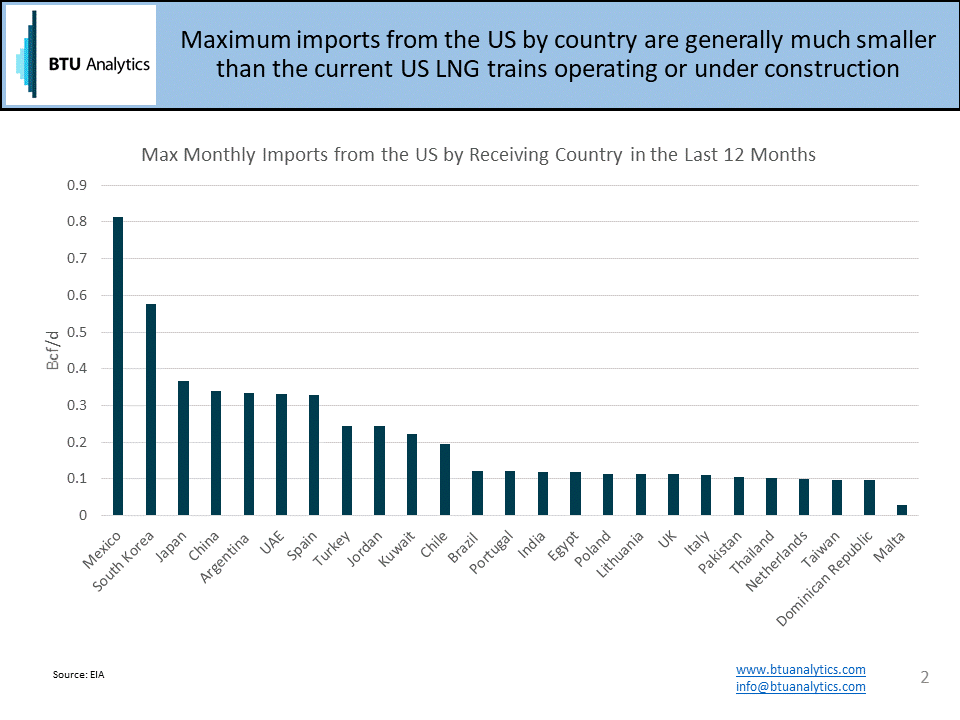In 2015, the price of liquefied natural gas (LNG) fell sharply and only a handful of US export projects secured final investment decision (FID) and began construction. The fate of other projects became clouded with several projects being canceled or delayed until LNG prices improved. Two years later, LNG market conditions are showing signs of improvement. However, due to the size and cost of LNG export facilities, there is a long development cycle where government approval and financial commitments today will not result in project completions for nearly 5 years. Thus, it may be time to pull the trigger on the next round of LNG projects.
Prices have shown some strengthening in the last two years, but the biggest change is that LNG prices are now clearing the all-in supply cost to market. The chart below shows a breakout of LNG costs to the Asian market and the LNG price in Japan. Although this analysis only focuses on one destination, the dynamics of exporting to Asia are a useful proxy for the overall LNG export market from the US. For much of last year the LNG price in Japan was below the all-in landed costs. While a number of cargoes still moved due to a portion of the supply costs being sunk, the appetite for additional projects was tempered by the immediate oversupply. However, in the second half of 2017 supply and shipping costs declined slightly while the price of LNG rose above the total cost structure. A positive sign for companies looking to further grow US LNG exports through additional trains and new facilities.

There are currently six US LNG export terminals approved by the Federal Energy Regulatory Commission (FERC) and under construction. In total, this provides over 9 Bcf/d of LNG export capacity. Of these, only Cheniere’s Sabine Pass is currently operating although deliveries to the Cove Point LNG facility are expected to begin soon. Trains 1 through 4 at Sabine have been running strong with daily volumes averaging above 3 Bcf/d. As natural gas drilling from the Marcellus and Utica and associated gas production from the Permian continue to grow available supply, demand from LNG has become an increasingly important piece of the supply and demand balance in the US.
Beyond 2020, BTU Analytics sees the North American natural gas market returning to a demand constrained dynamic. As such, and assuming global demand for LNG continues to increase, US gas production growth may be partially limited to the total capacity and utilization of LNG export facilities. While it is not expected that all projects will get built, FERC currently lists over 25 Bcf/d of additional projects in the application phase in the US alone plus additional facilities in Canada and Mexico are under consideration.
However, the design size of LNG trains is showing a shift in strategy. Of the projects currently under construction, capacity per train will average nearly 0.6 Bcf/d. Sabine Pass, Cove Point, Cameron, Corpus Christi and Freeport will have train sizes between 0.59 Bcf/d and 0.71 Bcf/d. Only Elba Island has a smaller train size of 0.18 Bcf/d. In contrast, the next wave of LNG facilities are being designed with smaller train capacities. Magnolia and Driftwood for example have proposed train capacities of 0.29 Bcf/d and 0.20 Bcf/d respectively. This is perhaps a way to provide for smaller markets or contracts while keeping overall costs and project timelines in check.

The chart above shows the maximum monthly LNG volumes received by country in the last 12 months. Only Mexico and South Korea come close to the level of imports provided from a single train at Sabine Pass. The remaining countries take less than 0.35 Bcf/d, much more in line with announced train sizes from future projects. Going forward, this makes sense as the initial LNG projects are able to market to and secure many of the larger, creditworthy buyers. However, moving forward, a shift to smaller trains could allow for commitments from smaller backers, utilities, and more specialized markets while providing some flexibility into the US export market. For more information on BTU Analytics’ LNG research, request a sample of the Henry Hub Outlook Report.









